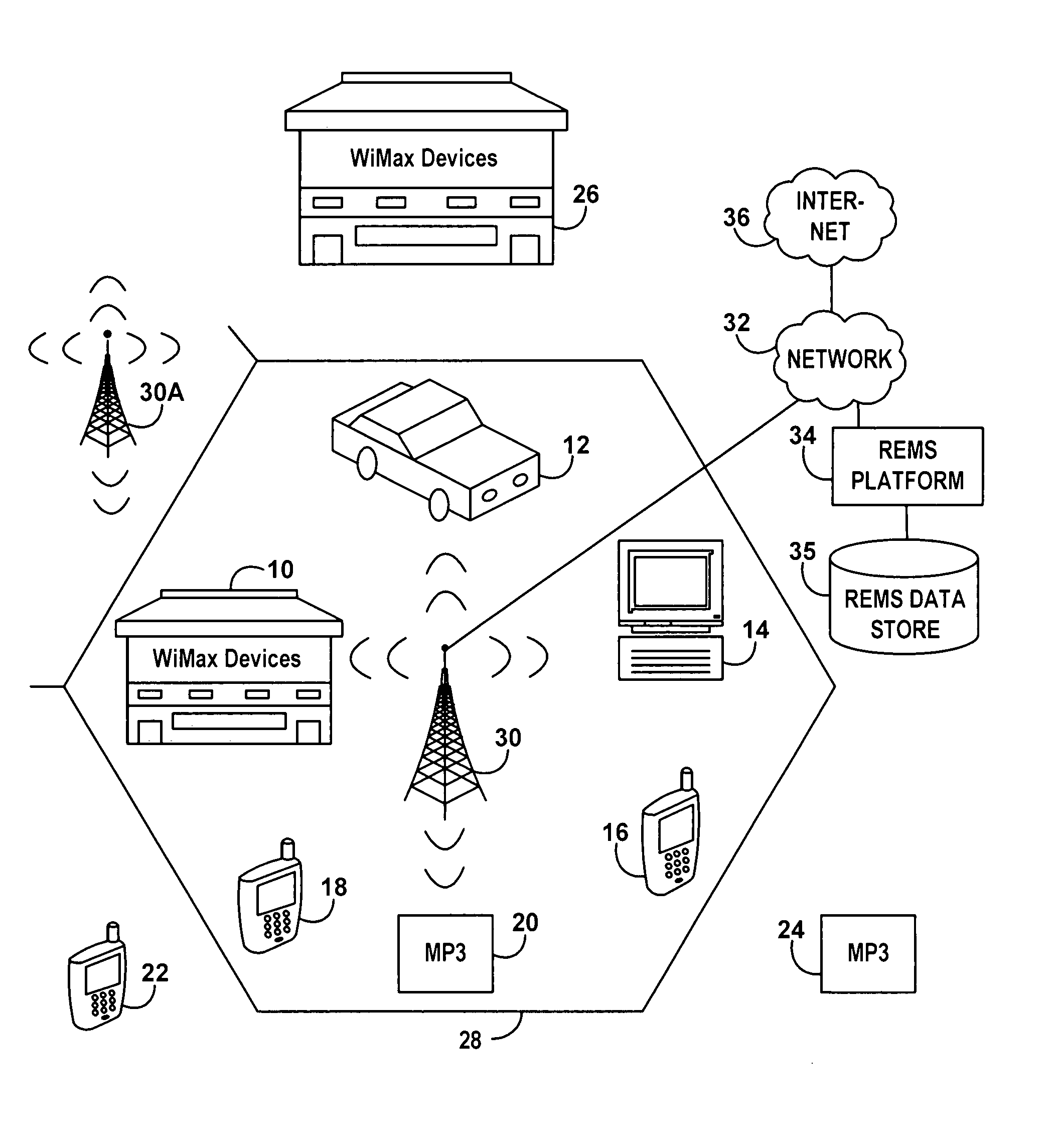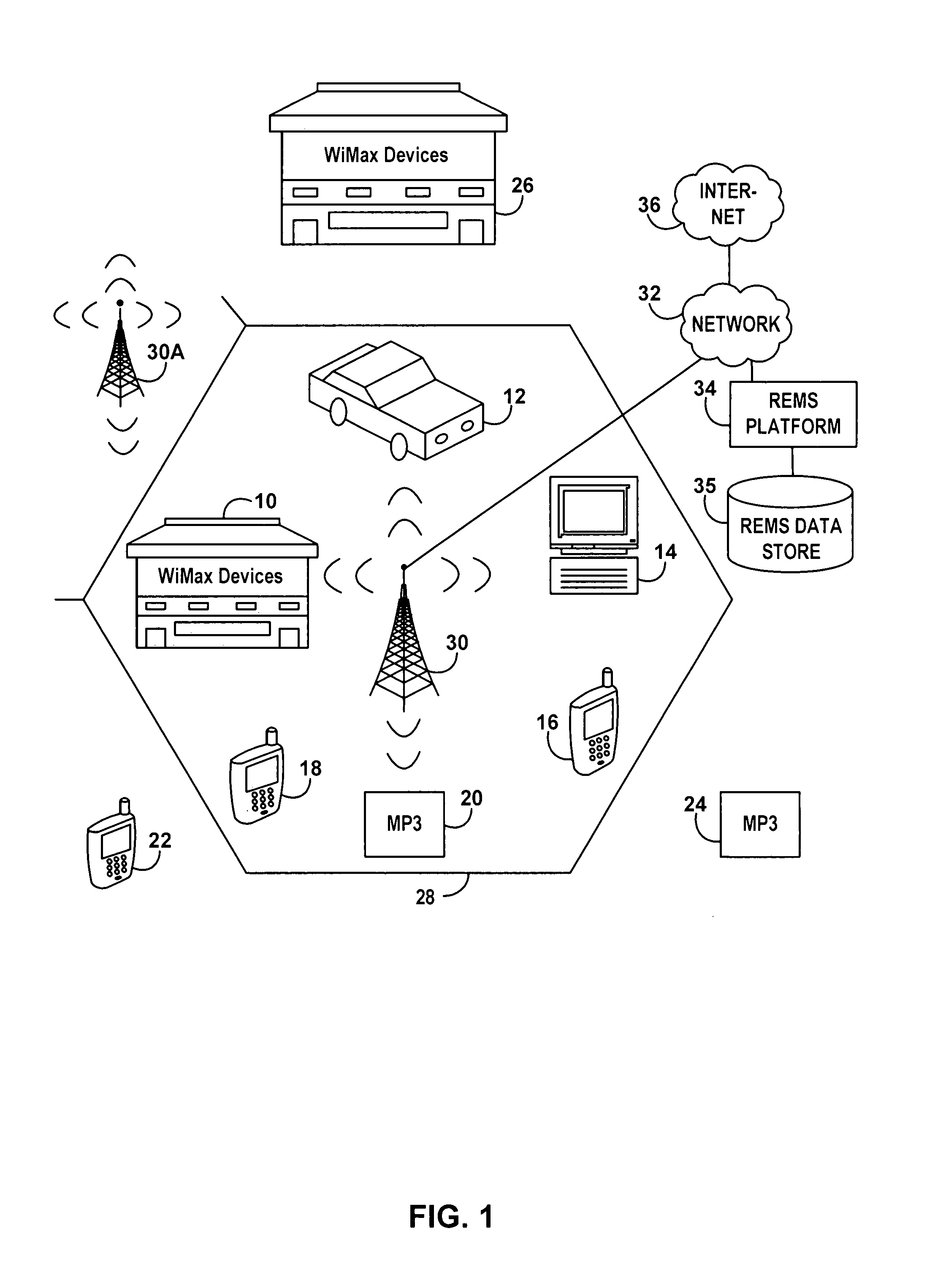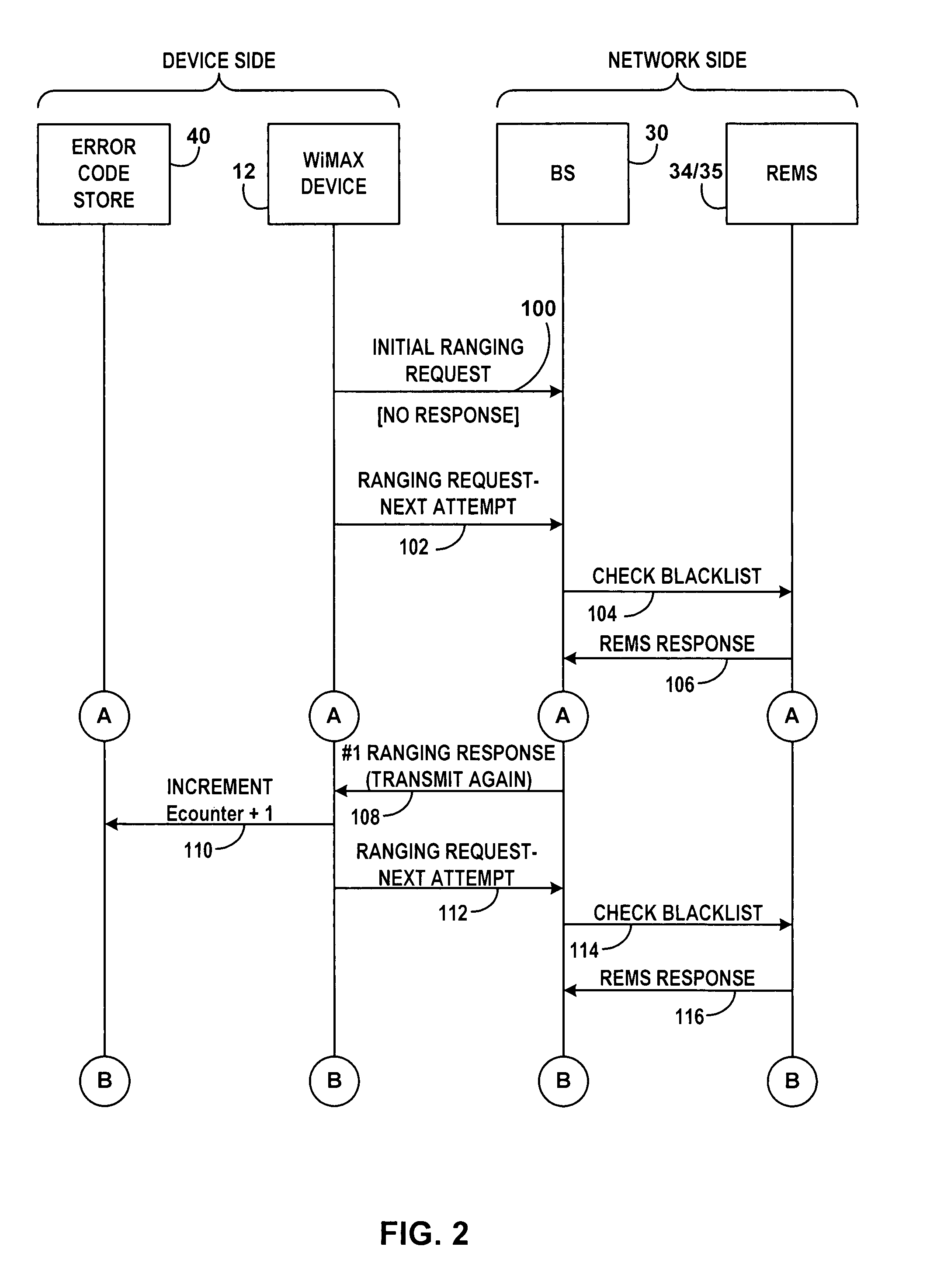Ranging resource allocation for wireless devices in networks providing access by Wi-MAX and like protocols
a wireless device and network access technology, applied in power management, electrical equipment, radio transmission, etc., can solve the problems of resource allocation, significant base station resources, and the virtual explosion of wimax devices in the near future, and achieve the effect of high ecount valu
- Summary
- Abstract
- Description
- Claims
- Application Information
AI Technical Summary
Benefits of technology
Problems solved by technology
Method used
Image
Examples
Embodiment Construction
[0035]This disclosure relates to methods and systems for limiting the ability of wireless devices to transmit ranging request messages in a wireless network. The method is applicable to various different wireless protocols, and the embodiments below use WiMAX as a non-limiting example.
[0036]FIG. 1 is schematic representation of a coverage area of a WiMAX base station 30 showing a plurality of WiMAX devices competing for ranging resources of the WiMAX base station 30. The devices may consist, for example, of WiMAX devices located in a building or home 10, such as computer, appliance or cell phone, WiMAX device located in an automobile 12, a portable computer 14, a cellular telephone 16, a personal digital assistant 18, an MP3 player 20, another cell phone 22, another MP3 player 24 and various WiMAX devices located within an office building 26 such as computers, cell phones, game players, etc. The base station 30 has a coverage area indicated by the hexagon 28. Adjacent areas are cove...
PUM
 Login to View More
Login to View More Abstract
Description
Claims
Application Information
 Login to View More
Login to View More - R&D
- Intellectual Property
- Life Sciences
- Materials
- Tech Scout
- Unparalleled Data Quality
- Higher Quality Content
- 60% Fewer Hallucinations
Browse by: Latest US Patents, China's latest patents, Technical Efficacy Thesaurus, Application Domain, Technology Topic, Popular Technical Reports.
© 2025 PatSnap. All rights reserved.Legal|Privacy policy|Modern Slavery Act Transparency Statement|Sitemap|About US| Contact US: help@patsnap.com



